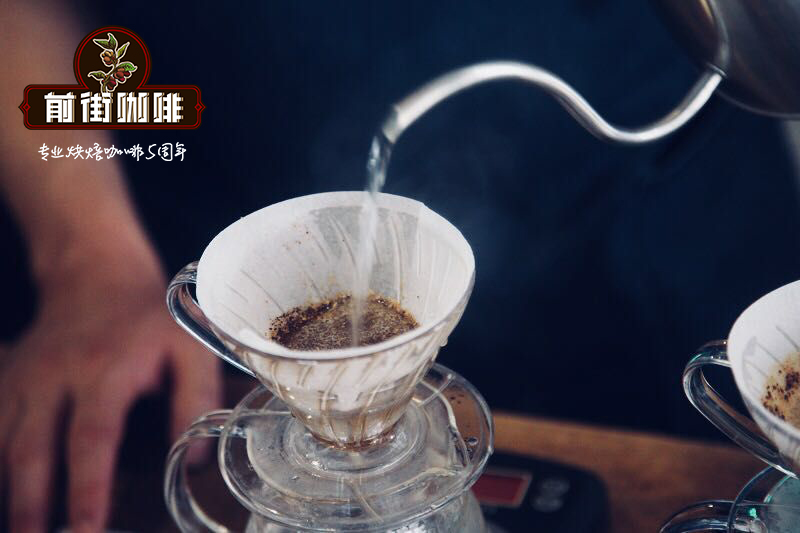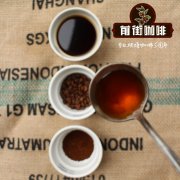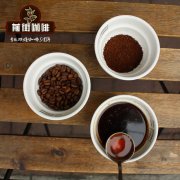What's the difference between large batches, micro batches and nano batches? the smaller the batch, the better the quality?

Quality, traceability, direct trade, reasonable price, unique flavor, good handling. These are the excellent properties of individual coffee and micro-batch coffee.
But if you put aside these definitions, do you know what "single origin" means? What is the difference between a single manor, micro-batch or even nano-batch? How else can producers make sure that micro-batches are not mixed with other batches of coffee?
To determine this answer, the authors interviewed Ubion Terra, executive director of Odyssey 39th Coffee Brazil, a company that produces single-origin, single-estate, micro-and nano-batches of coffee.
Single Origin Coffee: not as simple as its name
Single origin
Coffee harvested to the same area, however, if only according to the ground, there are still many factors leading to differences in taste.
Single country or region of origin
From the same country or a specific region of the country. In fact, most people are used to drinking recipes made of beans from two countries (such as Brazil and Colombia), and it is not unusual to use single beans to brew espresso.
However, now many people may argue that many single beans are only suitable for use as part of the formula beans, after all, there is still a difference in quality.
You may also have heard of "batches" of coffee harvested from specific areas, which can better show the flavor characteristics brought by the growing area, but the flavor performance is not as good as that of "micro-batches".
Single manor
Coffee grown from the same estate is usually high-quality, relatively high-priced coffee with excellent flavor characteristics.
Single cooperative
In some countries, there is no way to achieve a single orchard, especially in African countries where some farmers can only produce a few bags of coffee per harvest, and these farmers may have coffee trees smaller than some people's own gardens.
As far as a single cooperative is concerned, many batches harvested by farmers will be gathered together to carry out post-system processing. Some cooperative societies strictly control the quality of coffee fruits and even control the planting and harvest methods of farmers.
Extended reading: why are some coffees sour?
Micro batch
The coffee comes from a specific area of an estate, sometimes from a small farm, or from a small plot of land shared by many producers.
Coffee is harvested and processed in small batches, and because of higher labor costs, which in turn increases the back-end price, micro-batches of coffee usually have very good quality. Terra said that the cup score of the mini-batch of Olympian 39Tech coffee is about 87-89 points, and the output is about 40 packets of 60-kilogram sacks.
Nanometer batch
As the name suggests, nano batches are very similar to micro batches, but on a smaller scale. Terra said that their nano-batch cup test score is usually above 90, and then there will only be 1-to-2 packets of 60-kilogram sacks.
Why choose single manor and micro-batch?
So single origin is not that good? Does coffee have to come from a single farm, micro-batch and nano-batch in order to be of high quality? And what if microbatches are assembled from several estates?
When the third wave of coffee is becoming more and more popular and the transmission of information between farmers and consumers is faster, we should pay more attention to the meaning of origin. The nature and quality of soil, climate, variety selection and treatment will have a great impact on the quality of coffee.
This is why we should avoid introducing coffee solely by country or large producing areas. A single origin like Brazil is basically meaningless, because Brazil produces about 30% of the world's coffee, even if it comes from Brazil's Minas Gerais, because Brazil's Minas Gerais produces more coffee than most countries in the world.
Batches are subdivided and cut from the land of an estate, and the scale of land between batches may vary greatly. the information of each batch of land, from the description of the environment, altitude, soil, microclimate, and so on, will determine how coffee is grown and processed.
Larger batches usually produce coffee with a higher quality stability, with a cup test score of 80-84. Smaller batches of land produce micro-or even nano-batches of coffee, which may account for only 1% or even 0.1% of tens of thousands of packets of coffee.
On the other hand, in some countries such as Luanda, Burundi and Uganda, the total output of a farmer may be less than that of a microbatch in Brazil, where some farms produce only 20-30 bags of coffee a year. This is why some micro-batches of coffee, such as Tanzania, may have coffee produced by multiple farmers from a cooperative.
The more information we get about the source of coffee, from the local climate to the harvest and handling preferences of producers, the more we know about coffee itself. This explains why the coffee industry is moving towards "single manor", "micro-batch" and "nano-batch".
Is it better to be small?
Behind this micro-batch is coffee grown on smaller, more specific and more precisely controlled land, which is divided into four main assessment areas:
Traceability
No one will want to drink coffee from an unknown source, and the more details of the origin can be described, the more you will know about the coffee. The certification of this coffee is also important, so you can also know that this cup of coffee is environmentally sustainable or farmer-friendly.
Smaller batches of coffee are more traceable, and you can know where coffee is grown, under what conditions, and even its impact on the local environment. You start to have a little connection with coffee growers, and even ideally, buyers can work with farmers to create sustainability.
Uniqueness
Each planting and processing process will form a unique flavor of coffee (good or bad). Some coffee really have very unique flavor characteristics, some may be full of floral flavor, some may be sweeter.
If such coffee is combined into formula beans, these flavor characteristics may be masked. On the contrary, if such coffee is presented as a single product, it can reflect its unique flavor and the characteristics of batch processing.
Quality
If the quality of a cup of coffee is poor or mediocre, of course there is no need to retain the regional flavor. And single origin, single manor, micro-batch, nano-batch … These coffees are usually of good quality. In addition, through the screening of small batches, it is easier to identify which are really high-quality coffee.
The estate in Brazil, for example, will map each block of the farm and predict whether the coffee grown in those blocks has the potential to become micro-and nano-batches.
"We draw to make sure that the time and money of the investment are in the wrong place, just like conducting a cup test in advance, putting our efforts into developing the right planting area before harvesting, drying, baking and cup testing. to maximize the potential for this batch. "
Once this batch reaches its maximum potential in the planting stage, its quality can be maintained by more rigorous screening, drying procedures, and shelling, although it is not possible to take such care of all coffees. but for a certain part of the high-quality fruit, it can give full play to its maximum potential to make the time and money of the investment worthwhile.
partnership
In addition, Trevin Miller, director of Mr. Green Beans in Portland, Oregon, USA, said: "small batches of coffee allow bean bakers or raw bean manufacturers to control more factors affecting coffee quality. if raw bean importers have a way to connect directly with farmers, they can communicate with farmers to understand the complete origin of coffee and how it is produced. "
Single estates and micro-batches of coffee make it easier for producers to establish a long-term relationship with raw bean merchants, that is to say, it allows the two roles to give feedback to each other, not only for good quality and good price. and work together for the ideal coffee in the minds of both parties.
If you can directly connect buyers and producers, it will help both sides to maintain or even improve the quality of coffee in the process of communication.
In fact, this is better for producers, who can know whether the quality of coffee is maintained during delivery and how they can improve their practices in response to the needs of consumers.
How can the producer ensure that the batch is not mixed up?
When producing coffee of single origin, it is critical to ensure that each batch is independent and complete. any mixing and pollution will affect the flavor, quality and purity of coffee, and the smaller the batch is, the more you need to pay attention to the impact of this part.
It is important to keep historical data, and it is important to know clearly where the coffee comes from and that there is no coffee mixed with it from other farms.
Producers must work hard in the processing process to do so, especially in micro or nano batches. Tracking information and the location of coffee is key, as are organized gardens and processing plants. Coffee needs to be harvested, processed and stored separately. All information, such as batch name, batch number, variety, handling, etc., needs to be properly controlled and preserved.
Coffee of single origin. Is it easy?
The more we know about coffee of single origin, the more we will know its complexity. There are great differences in the nature of a single manor, a single country, a single producing area and micro-batches.
To ensure the purity of single-origin coffee, we must make a certain degree of hard work, especially the degree of subdivision of micro-batches and nano-batches.
One thing is clear: the more information we know about where coffee comes from, the more we can grasp the high quality of coffee and its sustainable impact.
Important Notice :
前街咖啡 FrontStreet Coffee has moved to new addredd:
FrontStreet Coffee Address: 315,Donghua East Road,GuangZhou
Tel:020 38364473
- Prev

Why the coffee species in Ethiopia are all native species the historical reason for the word "native species"
When we talk about Ethiopian coffee, some people use words such as jasmine, rose fruit and magnolia to describe the smell of flowers, but have you ever wondered why these specific varieties with floral flavor are often summed up as "native species"? In the early days of the third wave of coffee, native species were often used to describe Ethiopian coffee, but this is not very accurate.
- Next

What is monkey coffee? why is Kopi Luwak so expensive? can monkey coffee replace Kopi Luwak?
Haven't you ever heard of monkey coffee? Then you must have heard of civet coffee, and you all know that this legendary delicious coffee is actually obtained from the feces of a so-called "civet".
Related
- Detailed explanation of Jadeite planting Land in Panamanian Jadeite Manor introduction to the grading system of Jadeite competitive bidding, Red bid, Green bid and Rose Summer
- Story of Coffee planting in Brenka region of Costa Rica Stonehenge Manor anaerobic heavy honey treatment of flavor mouth
- What's on the barrel of Blue Mountain Coffee beans?
- Can American coffee also pull flowers? How to use hot American style to pull out a good-looking pattern?
- Can you make a cold extract with coffee beans? What is the right proportion for cold-extracted coffee formula?
- Indonesian PWN Gold Mandrine Coffee Origin Features Flavor How to Chong? Mandolin coffee is American.
- A brief introduction to the flavor characteristics of Brazilian yellow bourbon coffee beans
- What is the effect of different water quality on the flavor of cold-extracted coffee? What kind of water is best for brewing coffee?
- Why do you think of Rose Summer whenever you mention Panamanian coffee?
- Introduction to the characteristics of authentic blue mountain coffee bean producing areas? What is the CIB Coffee Authority in Jamaica?

